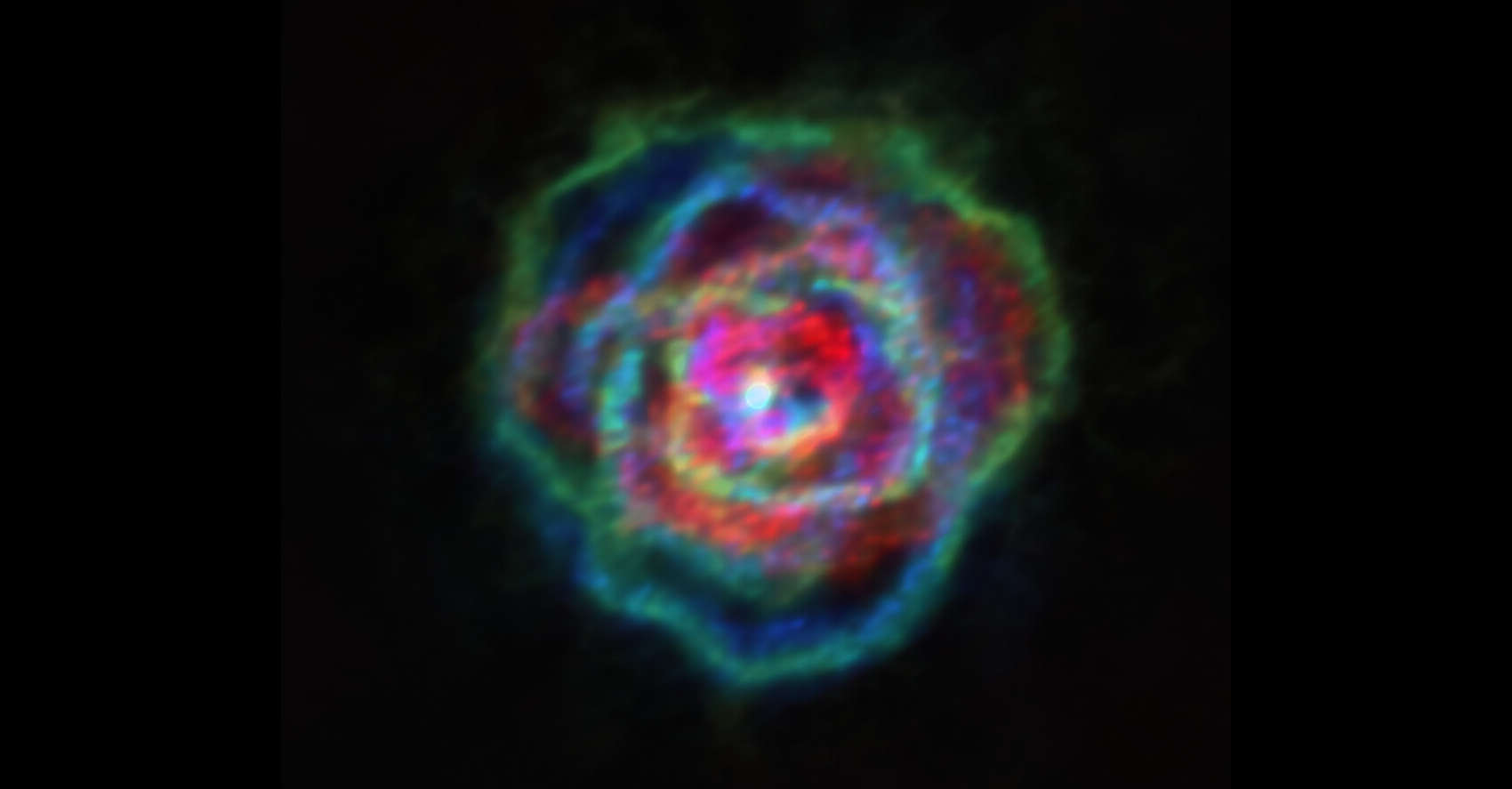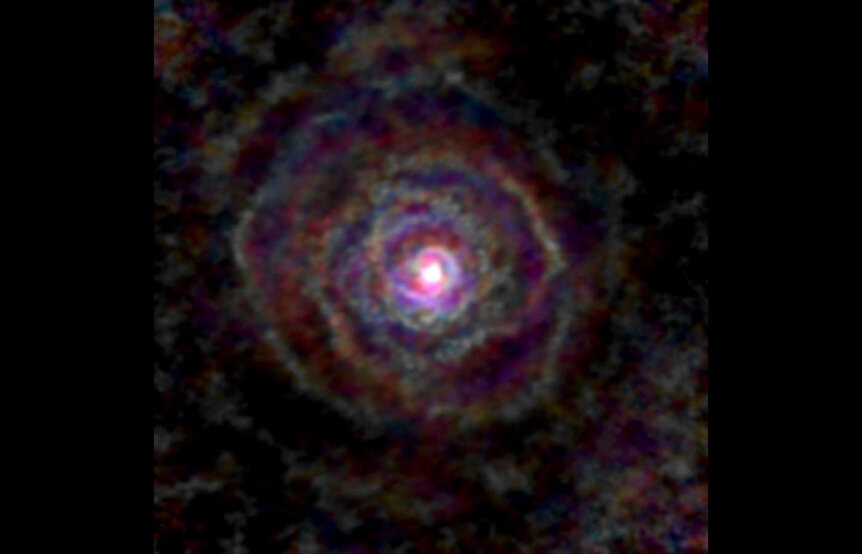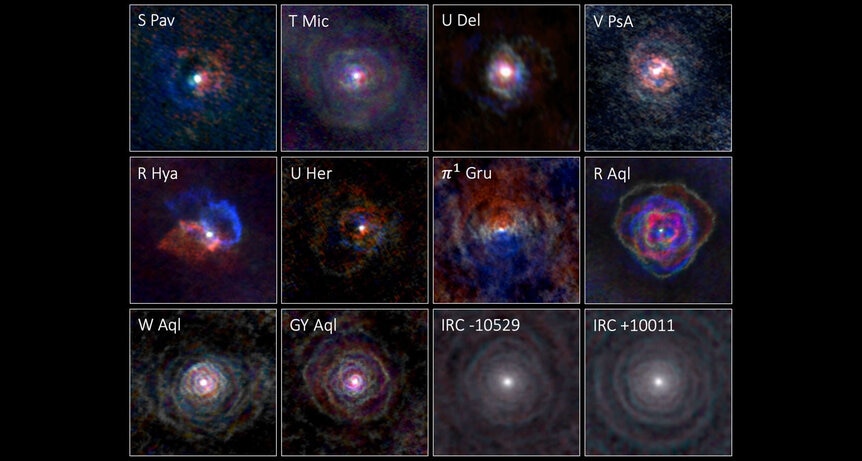Create a free profile to get unlimited access to exclusive videos, sweepstakes, and more!
Cosmic flowers bloom as stars begin to die

Stars die in beauty.
Stars generate energy in their cores by fusing hydrogen into helium, like a controlled hydrogen bomb. This energy moves outward from the core through the upper layers of the star, then leaves it as light.
As time goes on, inert helium builds up in the core. As more piles up the core contracts, getting very hot. When this happens with a star like the Sun (from roughly 0.8 to 8 times the Sun's mass), various complicated things happen in the core, heating it up further. The outer layers respond to this extra energy by swelling up like a hot air balloon. The star expands, becoming hundreds of times larger. It also cools, turning red. We call such a star a red giant.
The gas in the upper part of the star starts to blow away in a wind of particles. Eventually it all blows away and the core of the star is exposed. It blasts out ultraviolet light, which excites the gas, causing it to glow. This structure is called a planetary nebula.
Planetaries can have all kinds of fantastic shapes. Some are highly elongated with a narrow, pinched waist, and a thick disk or enhanced amount of gas there. It's thought this is due to the presence of a binary companion, another star, a brown dwarf, or a planet that orbits the dying star. Their orbital motion is what shapes that wind.
But you might think that the gas that blows off the red giant earlier on would be mostly spherical. Red giants don't spin rapidly (they can take years to rotate once) so the wind it blows should be equal and relatively smooth in all directions. And yes, roughly 80% of red giants like this should have spherical clouds of gas around them. But there have been papers published over the past 30 years positing various shapes and structures in that gas, like spirals and arcs. The problem is, that gas is very faint and difficult to see.
Until recently. New observations of these clouds around dying stars show that while they are kinda sorta spherical, they do indeed have structures in them, as predicted.
These observations were made with ALMA, the Atacama Large Millimeter/submillimeter Array in Chile, a collection of radio dishes with extraordinary sensitivity and keen vision. The astronomers mapped the location of cold carbon monoxide and silicon monoxide gas, which traces the outflow from the red giant stars. These clouds are huge; they're all hundreds of times larger than our entire solar system from the Sun out to Neptune.
It appears that a binary companion is the root cause of these structures, possibly substellar ones; that is, lower mass objects than stars such as big planets. As the two orbit each other, the gas flowing out of the red giant is shaped into various structures, likely dependent on how close together the two components are as well as the mass of the star. Very close in the gas forms a disk and an enhanced waist of material, and the gas flows out slowly. Farther out and the gas flows more rapidly, forming a double-lobed structure. Farther out yet and the two circling form spiral patterns, and the gas moves even faster.
This fits pretty well with the older hypotheses. The primary benefit of these observations is that before them, such observations were made using different telescopes with different properties; now there's a small but very useful catalog of stars observed under the same conditions. That will make comparing them and understanding the underlying conditions easier.
As I've noted before, I studied planetary nebulae for my Master's degree, looking at the huge halo of gas surrounding one in particular (NGC 6826… and I'll note that in the paper we published in 1990 we remarked that close-in planets or brown dwarfs could be a force in shaping planetary nebulae before the first close-in exoplanets were even discovered). That one had a remarkably spherical shape, but we couldn't see structure in it. Also, that gas was much older than what's shown here; the stars observed in this study were early on in their process of eventually forming planetary nebulae. That's another reason these observations are valuable: They show a time early in the process that has been previously difficult to observe.
It's hard to look at these images and not wonder what will happen to the Sun when it starts to run out of nuclear fuel in a few billion years. The answer is: Beautiful things, but maybe not so beautiful for us. Stay tuned. I'll have more about that tomorrow.





























